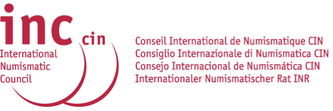Introducing Online Greek Coinage
The discipline of Greek numismatics is traditionally conceived as covering the coinage produced from Spain in the West to the Indus in the East, from the origins of coinage in the 7th century BC, to the reduction of the last great Hellenistic kingdom in 31 BC. It is almost easier to define this disparate mass of coinage by what it does not include: anything produced by the state of Rome, or tinged by the antiquarian notion of the Celt. The idea that this world was Greek is clearly false, but the discipline has organised itself around this signifier, partly because scholars tend to consider coinage as a Greek invention, adopted by neighbouring peoples as a Greek concept. That idea can be debated but it is the backbone of the discipline: the geographical classification of Greek coinage has been adopted by all major collections and is an international system relevant for an international typology. Our project then, almost ineluctably, bears this loaded but useful term, and we begin with the aim to cover the territory adopted by Barclay Head with his Historia Numorum.
But there the similarity ends. Online Greek Coinage (OGC) is emphatically not a handbook, nor intended to provide a guide to the coinage of this time or these places. It is a reference database intended to provide a systematized account of all types of coinage produced within its purview, and rooted in the digital world of the 21st century. It is intended to be readable by humans and machines. It will provide a classical typology of coin types online, identified by a series of stable http-addressable URIs for every distinct issue of Greek coinage. For these URIs will be provided basic descriptive information expressed in RDF. And for each issue, links will be provided to information about individual specimens of that issue. The Typology will seek to guarantee inclusion of specimens from a series of core collections (in major public institutions) and core resources (such as Sylloge Nummorum Graecorum and the Inventory of Greek Coin Hoards). Where possible and desirable it will also include information on specimens from non-core collections (including private collections), excavations and commerce.
The basis for the creation of typologies for coinages will be twofold. Where existing reliable reference works exist and their authors are willing to collaborate, these existing reference systems will be adapted to the need of the OGC project. Where no such reference work exists, new work may be commissioned. Online Greek Coinage may equally benefit from the traditional workflow of scholarly study in the field of numismatics. Authors preparing the scientific publication of a mint, for instance, may add their catalogues of types, while still working towards the publication of a traditional article or monograph. The Typology will not replace such formats as articles and books, but rather provide an enhanced means for incorporating their conclusions into a systematic account of Greek coinage.
The principal purpose of Online Greek Coinage, it should be stressed, is to provide a human and machine-readable summary of the coinage of the ‘Greek’ world. It will aid in the Linking of online resources, the cataloguing of collections and new specimens, and the presentation of numismatic material in new ways and in multiple languages. It will provide multiple forms of output, including simple data downloads, as well as formatted printed text. And it will allow us to communicate the results of our research beyond the traditional confines of our discipline.
But there the similarity ends. Online Greek Coinage (OGC) is emphatically not a handbook, nor intended to provide a guide to the coinage of this time or these places. It is a reference database intended to provide a systematized account of all types of coinage produced within its purview, and rooted in the digital world of the 21st century. It is intended to be readable by humans and machines. It will provide a classical typology of coin types online, identified by a series of stable http-addressable URIs for every distinct issue of Greek coinage. For these URIs will be provided basic descriptive information expressed in RDF. And for each issue, links will be provided to information about individual specimens of that issue. The Typology will seek to guarantee inclusion of specimens from a series of core collections (in major public institutions) and core resources (such as Sylloge Nummorum Graecorum and the Inventory of Greek Coin Hoards). Where possible and desirable it will also include information on specimens from non-core collections (including private collections), excavations and commerce.
The basis for the creation of typologies for coinages will be twofold. Where existing reliable reference works exist and their authors are willing to collaborate, these existing reference systems will be adapted to the need of the OGC project. Where no such reference work exists, new work may be commissioned. Online Greek Coinage may equally benefit from the traditional workflow of scholarly study in the field of numismatics. Authors preparing the scientific publication of a mint, for instance, may add their catalogues of types, while still working towards the publication of a traditional article or monograph. The Typology will not replace such formats as articles and books, but rather provide an enhanced means for incorporating their conclusions into a systematic account of Greek coinage.
The principal purpose of Online Greek Coinage, it should be stressed, is to provide a human and machine-readable summary of the coinage of the ‘Greek’ world. It will aid in the Linking of online resources, the cataloguing of collections and new specimens, and the presentation of numismatic material in new ways and in multiple languages. It will provide multiple forms of output, including simple data downloads, as well as formatted printed text. And it will allow us to communicate the results of our research beyond the traditional confines of our discipline.
